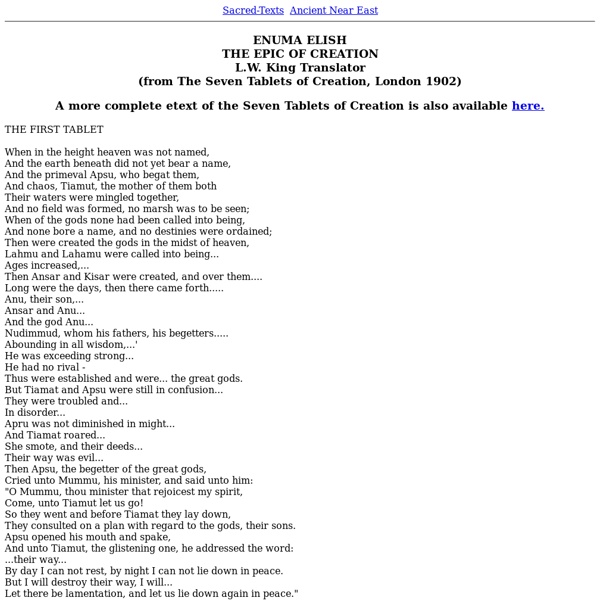Liber Juratus Honorii, or the Sworn Book of Honorius
This done, in the middle of the circles, namely in the center, make a pentagram thus: in the middle of which should be the sign 'Tau', thus: , and above that sign, write the name of God El, and underneath this another name of God, namely, Ely, in this fashion: Then, below the uppermost angle of the pentagram, write these two letters: .l.x. Then, around the pentagram make a heptagon; it may touch the uppermost side of the pentagram, <its second> which is after the middlemost top angle, where are written .l.x. And in the same side of the heptagon write this name of the holy angel, which is Casziel. Then, around that preceding heptagon, make another heptagon, not made like the first, but in such a manner that the one side of it will intersect the previous side of the same. Then make another such heptagon, like the first, whose seven angles touch the seven angles of the second heptagon, and the which should be shown doubled. Then, in each of the angles of the second heptagon make a cross.
Egyptian Mythology
Egyptian mythology: The Shabaka Stone - Memphite mythology Sekhmet and Ptah Osiris Excerpt. Courtesy Jon Bodsworth Anubis Excerpt. Courtesy Jon Bodsworth Re-Horakhte Excerpt. Courtesy Jon Bodsworth From time immemorial Egypt has been known as the country of two lands: The desertlike Upper Egypt, or the Red Land, and Lower Egypt, or the Black Land, where the soil is fertile. Even today 99 percent of the Egyptian population live in the Black Land. by Charles H. From the Shabaka Stone [King of Upper and Lower Egypt] is this Ptah, who is called the great name: [Ta-te]nen [South-of-his-Wall, Lord of eternity] [the joiner] of Upper and Lower Egypt is he, this uniter who arose as king of Upper Egypt and arose as king of Lower Egypt. The Memphite theology takes over older local notions of creation, such as that of Hermopolis, which describes creation proceeding from eight primordial beings of chaos who inhabited the primeval slime. His (Ptah's) Ennead is before him as teeth and lips.
Twilit Grotto -- Esoteric Archives
Key of Solomon variants: This is the most famous and influential handbook of magic. Key of Solomon Mathers' edition. The Key of Knowledge. A Sixteenth-Century English translation of the Key of Solomon. The Clavicle of Solomon, revealed by Ptolomy the Grecian.
Gods of Ancient Egypt Main Menu
Many books have been written on religion in ancient Egypt. This brief overview is meant only to explain some of the basic concepts and to introduce some of the gods. Religion in ancient Egypt was not unlike modern times. Today, not everyone believes in the same way, or of the same god. The creator of all things was either Re, Amun, Ptah, Khnum or Aten, depending on which version of the myth was currently in use. As stated earlier, certain gods were worshipped in different areas. Amaunet - A female counterpart to Amon and one of the primordial gods of the Hermopolitian Ogdoad (group of eight gods). Amon - Usually associated with the wind, or things hidden, and was also of the Hermopolitian Ogdoad. Antaios - He was originally a double god, "the two falcons", that was later joined to create one, probably that of Horus. Anuket - Worshipped at Elephantine, she was associated with the gazelle. Atum - A primordial god that was represented in the form of a human and a serpent.
Internet Sacred Text Archive Home
Internet Sacred Text Archive Home
8 Ancient Writing Systems That Haven't Been Deciphered Yet
The Indus Valley civilization was one of the most advanced in the world for more than 500 years, with more than a thousand settlements sprawling across 250,000 square miles of what is now Pakistan and northwest India from 2600 BCE to 1900 BCE. It had several large, well-planned cities like Mohenjo-daro, common iconography—and a script no one has been able to understand. Over at Nature, Andrew Robinson looks at the reasons why the Indus Valley script has been so difficult to crack, and details some recent attempts to decipher it. Since we don't know anything about the underlying language and there's no multilingual Rosetta stone, scholars have analyzed its structure for clues and compared it to other scripts. Most Indologists think it's "logo-syllabic" script like Sumerian cuneiform or Mayan glyphs. One team has created the first publicly available, electronic corpus of Indus texts. The Indus Valley script is far from the only one to remain mysterious. 1. 2. 3. 4. 5. 6. 7. 8.
Sumerian Mythology FAQ
by Christopher Siren, 1992, 1994, 2000 cbsiren at alum dot mit dot edu This FAQ used to be posted on the third of every month to alt.mythology. An older text copy of this FAQ is available via anonymous ftp pending *.answers approval at: rtfm.mit.edu at /pub/usenet/news.answers/mythology/sumer-faq last changes: July 27, 2000: complete revision including incorporating Kramer's Sumerian Mythology and Black & Green's God's Demons and Symbols of Ancient Mesopotamia. Adapa (Dan Sullivan) has constructed a more complete Sumerian-English dictionary at: (Restored! I have constructed a rudimentary Sumerian-English, English Sumerian glossary using Kramer's The Sumerians and Jacobsen's Treasures of Darkness, although parties interested in the Sumerian language may be better served at the prior two pages. note: This FAQ is partly based on an anthropology paper which I wrote in 1992, using some of the sources detailed below. Contents: I. History Culture



